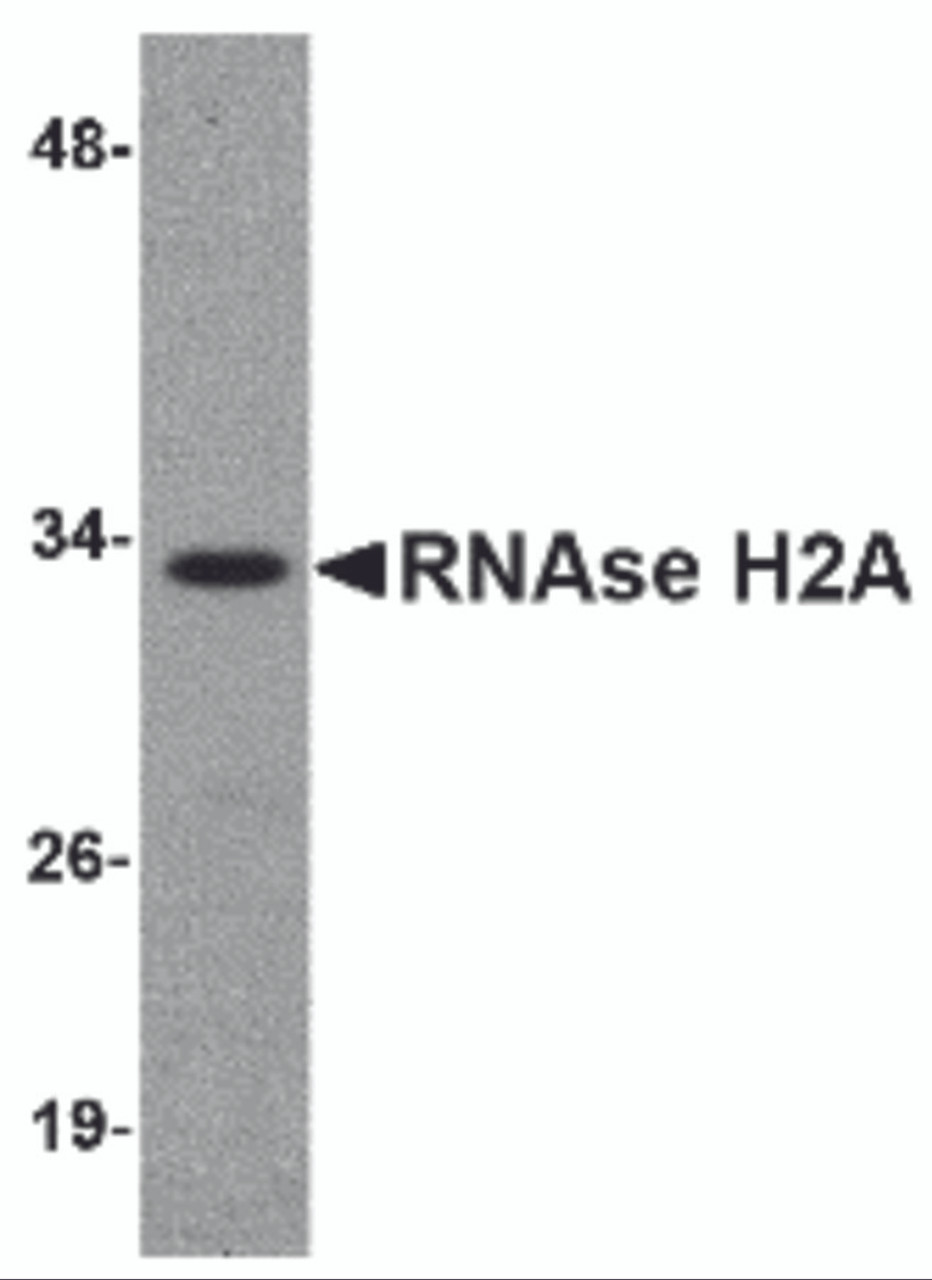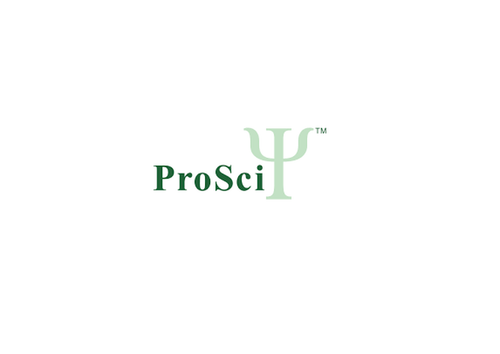Product Description
RNAse H2A Antibody | 4979 | ProSci
Host: Rabbit
Reactivity: Human, Mouse, Rat
Homology: Predicted species reactivity based on immunogen sequence: Bovine: (100%)
Immunogen: RNAse H2A antibody was raised against a 17 amino acid synthetic peptide near the center of human RNAse H2A.
The immunogen is located within amino acids 190 - 240 of RNAse H2A.
Research Area: Homeostasis
Tested Application: E, WB, ICC, IF
Application: RNAse H2A antibody can be used for detection of RNAse H2A by Western blot at 1 μg/mL. Antibody can also be used for immunocytochemistry starting at 2 μg/mL. For immunofluorescence start at 4 μg/mL.
Antibody validated: Western Blot in human samples; Immunocytochemistry in human samples and Immunofluorescence in human samples. All other applications and species not yet tested.
Specificiy: N/A
Positive Control 1: Cat. No. 1201 - HeLa Cell Lysate
Positive Control 2: Cat. No. 17-001 - HeLa Cell Slide
Positive Control 3: N/A
Positive Control 4: N/A
Positive Control 5: N/A
Positive Control 6: N/A
Molecular Weight: Predicted: 33 kDa
Observed: 33 kDa
Validation: N/A
Isoform: N/A
Purification: RNAse H2A Antibody is affinity chromatography purified via peptide column.
Clonality: Polyclonal
Clone: N/A
Isotype: IgG
Conjugate: Unconjugated
Physical State: Liquid
Buffer: RNAse H2A Antibody is supplied in PBS containing 0.02% sodium azide.
Concentration: 1 mg/mL
Storage Condition: RNAse H2A antibody can be stored at 4˚C for three months and -20˚C, stable for up to one year. As with all antibodies care should be taken to avoid repeated freeze thaw cycles. Antibodies should not be exposed to prolonged high temperatures.
Alternate Name: RNAse H2A Antibody: AGS4, JUNB, RNHL, RNHIA, RNASEHI, Ribonuclease H2 subunit A, Aicardi-Goutieres syndrome 4 protein, RNase H2 subunit A
User Note: Optimal dilutions for each application to be determined by the researcher.
BACKGROUND: RNAse H2A Antibody: Ribonucleases (RNAses) H are enzymes that hydrolyze the RNA strands of RNA/DNA hybrids. The major role of these enzymes is to remove the RNA strand from the RNA/DNA hybrids that form during DNA replication and repair. RNAse H2 is made up of three subunits; all three are required for RNAse activity. Recent evidence has demonstrated that mutations in RNAse H2A or any of the other subunits result in Aicardi-Goutieres syndrome (AGS) , a neurological disorder with similar symptoms to viral brain infections including high levels of IFN-alpha in the cerebral spinal fluid. Similar conditions are observed with mutations in TREX1, a single-stranded DNA exonuclease, suggesting that RNAse H2 and TREX1 may have similar roles, and that mutations in any of these genes lead to an accumulation of intracellular nucleic acids, triggering an inflammatory response through activation of the innate immune system.
 Euro
Euro
 USD
USD
 British Pound
British Pound
 NULL
NULL
















